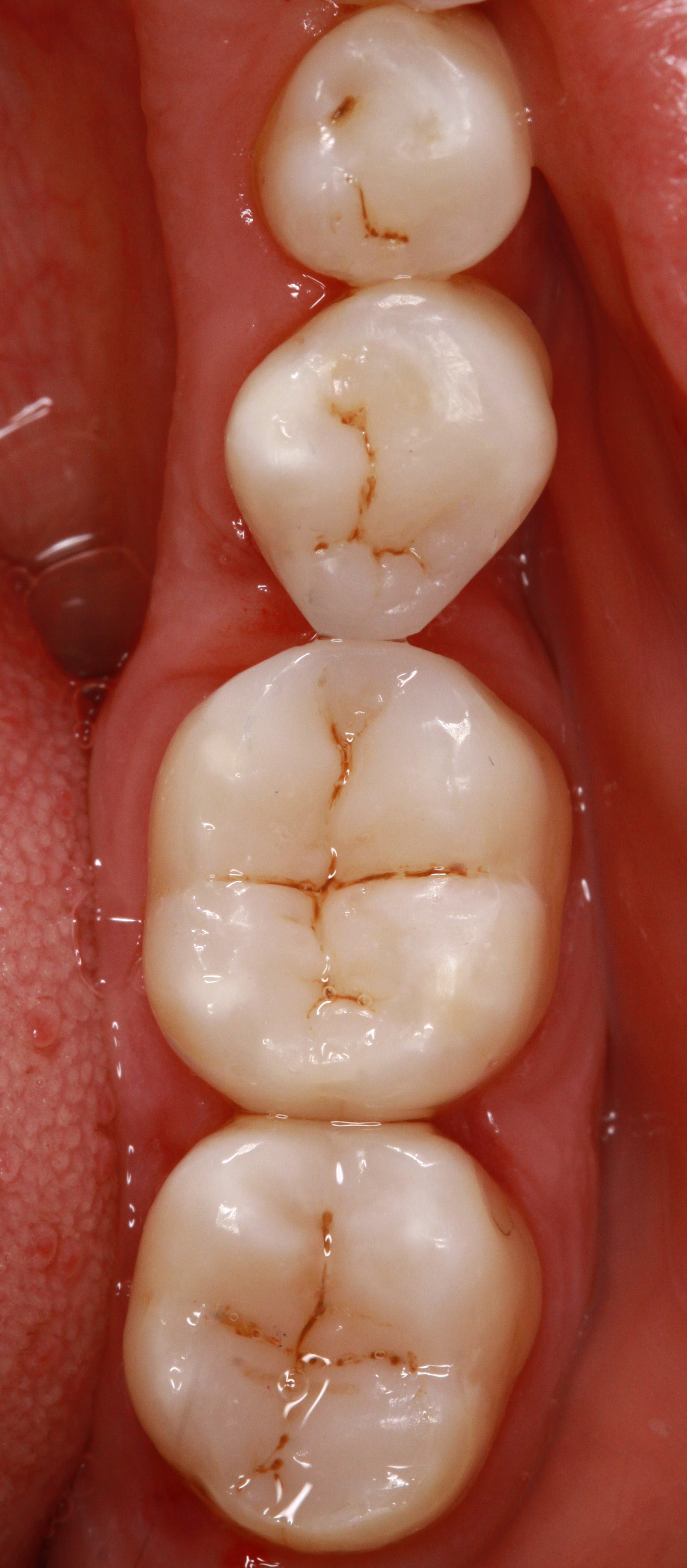Implant superstructures
Implant superstructures
Implants can basically be used in the same manner as natural teeth for supporting all types of dental restorations (single crowns, bridges, fixed-removable restorations, overdentures). A respective restoration is called a superstructure. It can be designed as removable, fixed/removable or only fixed.
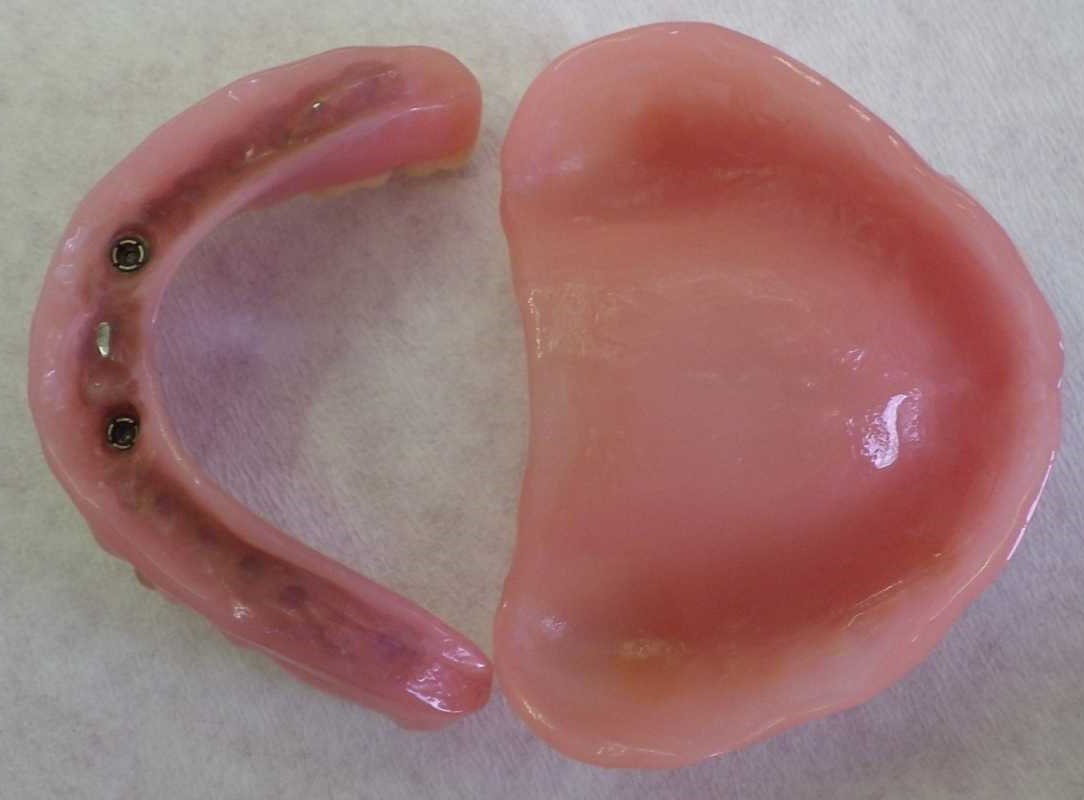 Full upper and lower dentures (fitting surface with ball sockets)
Full upper and lower dentures (fitting surface with ball sockets)
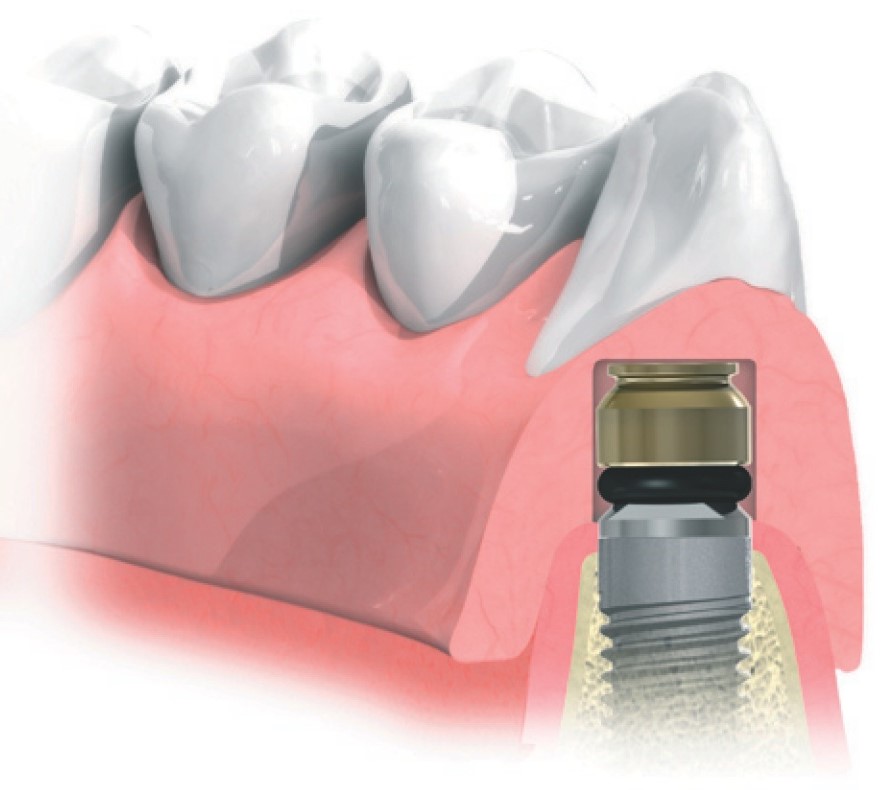 Ball attachment
Ball attachment
A superstructure can be purely implant-supported or supported both on teeth and implants. Particularly with bridges the term used is hybrid or tooth/implant-borne.
 Implant-borne metal-ceramic crowns
Implant-borne metal-ceramic crowns
Cemented superstructures are differentiated between provisional (temporary), definitive (permanent) and semi-permanent cementation. The latter should enable secure retention and at the same time removal of the superstructure by the dentist, if necessary. This is referred to as an operator-removable (i.e. fixed for the patient) superstructure and also includes screw-retained superstructures.
Both types of retention have advantages and disadvantages:
Screw retention creates gaps, which can be colonised by bacteria. To prevent this special gels, intended to remain effective in the long-term, are supplied for applying in the interior of the implant. If superstructures are screw-retained, they can also fail due to loosening, overloading or fracturing.
As implants are not self-mobile and are anchored rigidly in the alveolar bone the aim is always to ensure a passive fit of the superstructure. With screw-retained superstructures the passive fit can be checked on a minimum of two abutments using the Sheffield test (gap-free fit when tightening any individual screw). Procedures for intraoral bonding (such as adhesive bonding) of components of the superstructure and/or digital fabrication (e.g. milling, sintering) are used to fabricate stress-free frameworks.
To avoid inaccessible excess cement, which could result in peri-implantitis and implant failure, the restoration margin of cemented superstructures should always terminate in the region of the gingival margin. This allows fabrication of implant platforms mainly at bone level with corresponding (if necessary, custom-fabricated) abutments.
Abutments are used as a connection between implants and superstructure. Angled abutments enable parallelisation to produce a common path of insertion with superstructures on several abutments. Abutments can either copy the form of a tooth preparation or include a component of a connector (e.g. press-stud systems, ball abutment, bars, magnets). In these cases the superstructure incorporates the respective complementary components.
Want to give it a try ...
... or need professional advice?
Get in touch with us or click Contact.
Word of the day
| English | German |
|---|---|
| wooden wedge | Holzkeil |
Focus text of the month
Composites also composite (from the Latin componere = to compose) are tooth-coloured filling materials with plastic properties used in dental treatment. In lay terms they are often referred to as plastic fillings, also erroneously sometimes confused with ceramic… Composites also composite (from the Latin componere = to compose) are tooth-coloured filling materials with plastic properties used in dental treatment. In lay terms they are often referred to as plastic fillings, also erroneously sometimes confused with ceramic fillings due to their tooth colour. After being placed in a cavity they cure chemically or by irradiating with light or a combination of the two (dual-curing). Nowadays, composites are also used as luting materials. The working time can be regulated with light-curing systems, which is a great advantage both when placing fillings and during adhesive luting of restorations. Dual-curing luting materials are paste/paste systems with chemical and photosensitive initiators, which enable adequate curing, even in areas in which light curing is not guaranteed or controllable. Composites were manufactured in 1962 by mixing dimethacrylate (epoxy resin and methacrylic acid) with silanized quartz powder (Bowen 1963). Due to their characteristics (aesthetics and advantages of the adhesive technique) composite restorations are now used instead of amalgam fillings.
The material consists of three constituents: the resin matrix (organic component), the fillers (inorganic component) and the composite phase. The resin matrix mainly consists of Bis-GMA (bisphenol-A-glycidyldimethacrylate). As Bis-GMA is highly viscous, it is mixed in a different composition with shorter-chain monomers such as, e.g. TEGDMA (triethylene glycol dimethacrylate). The lower the proportion of Bis-GMA and the higher the proportion of TEGDMA, the higher the polymerisation shrinkage (Gonçalves et al. 2008). The use of Bis-GMA with TEGDMA increases the tensile strength but reduces the flexural strength (Asmussen & Peutzfeldt 1998). Monomers can be released from the filling material. Longer light-curing results in a better conversion rate (linking of the individual monomers) and therefore to reduced monomer release (Sideriou & Achilias 2005) The fillers are made of quartz, ceramic and/ or silicon dioxide. An increase in the amount of filler materials results in decreases in polymerisation shrinkage, coefficient of linear expansion and water absorption. In contrast, with an increase in the filler proportion there is a general rise in the compressive and tensile strengths, modulus of elasticity and wear resistance (Kim et al. 2002). The filler content in a composite is also determined by the shape of the fillers.
Composite restorations Conclusion |

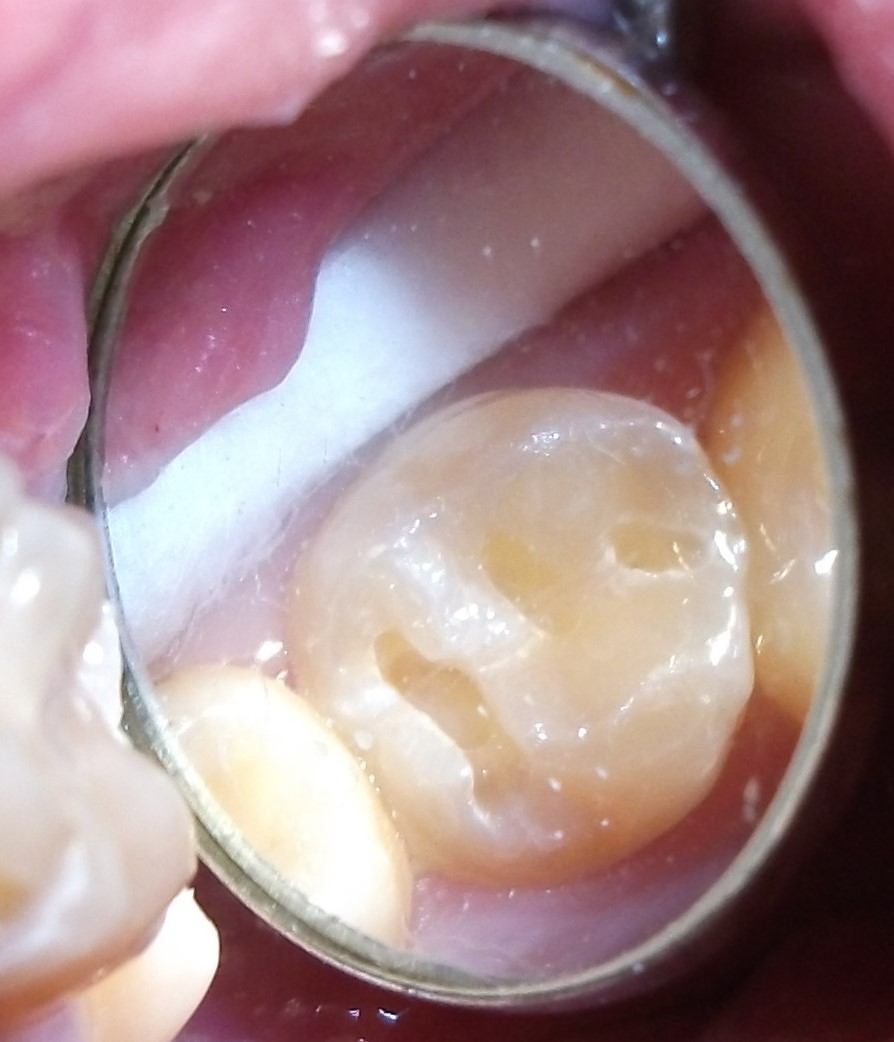 Minimally-invasive preparation and
Minimally-invasive preparation and 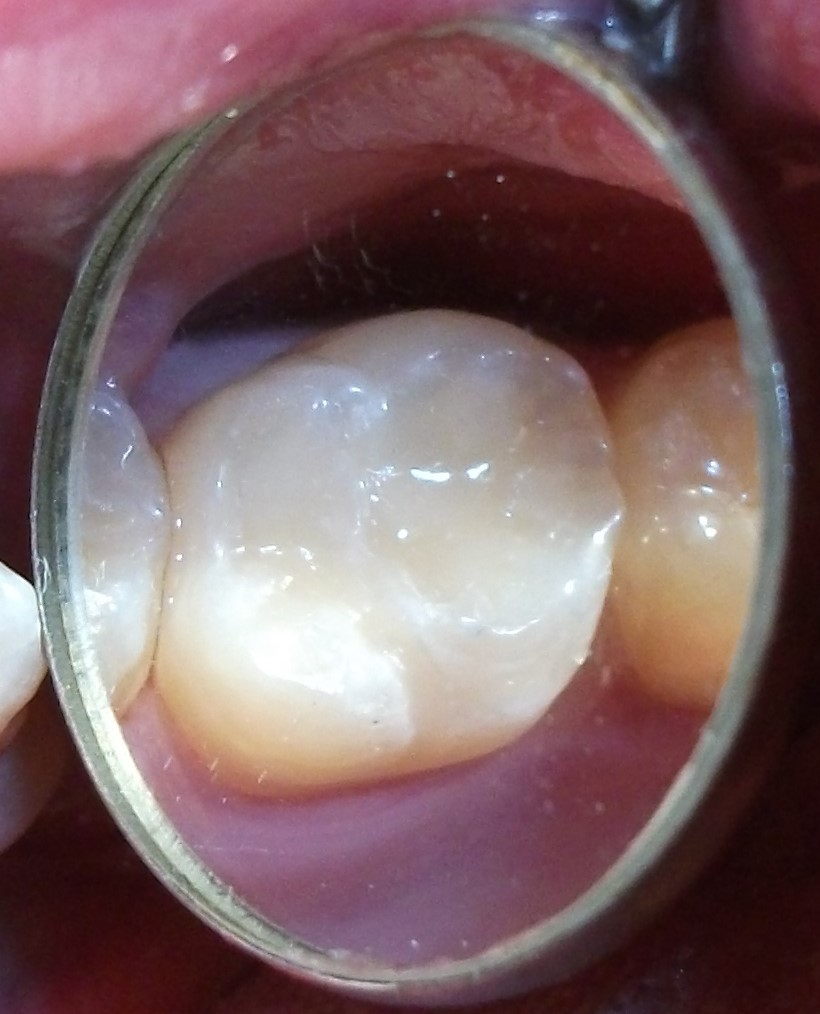 indiscernible composite restoration
indiscernible composite restoration